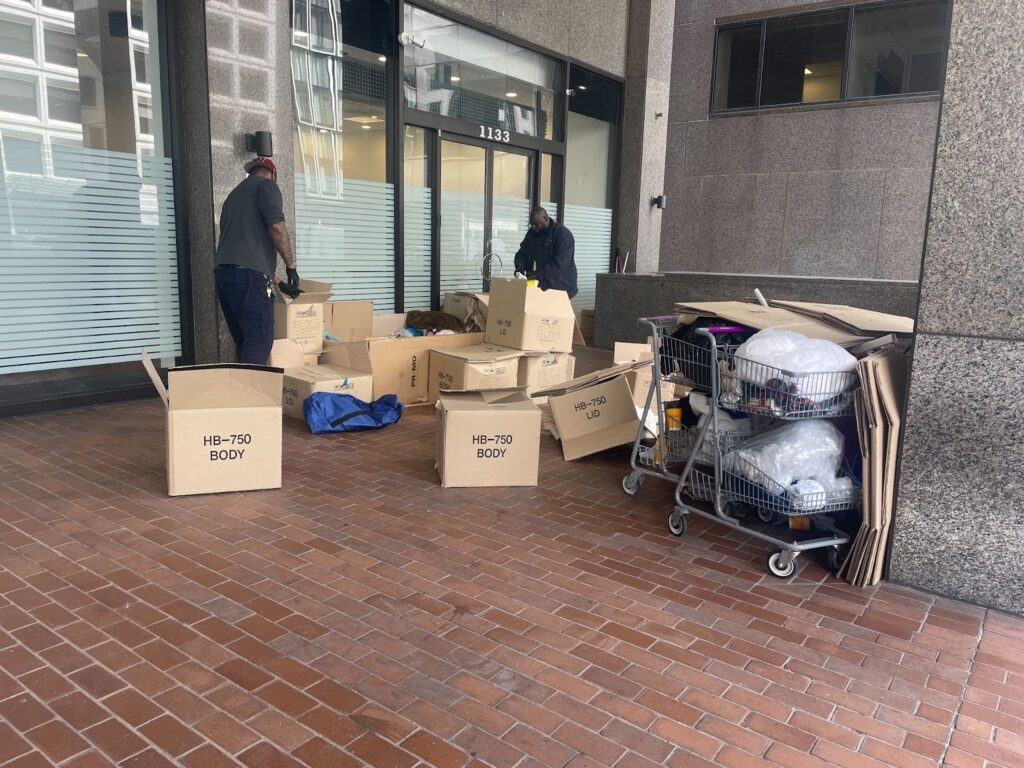The Office of the Deputy Mayor for Health and Human Services issued another homeless encampment teardown. City officials were set to arrive at the NoMa encampment under the 2nd Street Metro bridge at 10 a.m. on Tuesday, June 20. Department of Human Services, Department of Behavioral Services, and community outreach workers from local non-profit Pathways to Housing arrived as scheduled, along with sanitation workers and dumpsters.
Several city notices were posted on lampposts under the bridge. In accordance with the city protocol, the notices were dated June 6, 2017, two weeks before the cleanup. Kristy Greenwalt, Director of the Intercommunity Council on Homelessness, along with a few other government officials were present to watch the eviction. Greenwalt defended the necessity of the clean-up of this particular encampment, stating that pitched tents on the sidewalk force pedestrians to walk in the street.
Greenwalt also said, “we are one of three cities with a legal right to shelter. We want folks to go inside.” Greenwalt said there are “active conversations” going on about alternatives to cleanups. She mentioned having shelters provide more necessities to incentivize people to go inside. Despite the presence of shelter and housing outreach at the cleanup, no one chose to go to shelter.
Outreach workers knocked on tent fronts to let tenants know they were officially being moved. The clean-up was well attended by the press. In addition to Street Sense, news outlets with reporters in attendance included two television networks and the Washington Post. Many eyes watched as city officials threw away the possessions of the tent dwellers. Some eyes were more welcome than others; a cyclist passing under the bridge pulled out his phone to snap a picture and was met with jeers from those tent dwellers.
Quick work was made of the cleanup; by 10:30 the majority of tents had been taken down. Many of those evicted from the area around the 2nd Street bridge picked up and moved to a new encampment three blocks away in front of an empty building in the vicinity of M, N and 3rd Streets Northeast.
On the next day, June 21, a representative of NoMa Business Improvement District, a police officer, and the owner of the vacant building arrived to inform those who had moved to the new encampment that they were required to be gone by 9 am the following day or the police would force them out, according to homeless advocate Eric Sheptock. Because the campers were on private property, DMHHS does not require two weeks’ notice. Sheptock and others have speculated that NoMa BID asked the building owner to file the complaint that allowed the police to come in. The building is vacant and has had a raze notice posted since August 2015. The neighboring building is also vacant; the campers were not interfering with business.
By 9 am the next morning, many of the tents that had been pitched at the 3rd Street building had been taken down and moved by their owners. After the 9 am cleanup on 3rd street, the cleanup crew went to the 2nd Street bridge to re-sweep the area. This second clean-up was not attended by government oficials or by press other than Street Sense.
The wording of the notices posted around encampments has been updated to include a new feature in the tent removal protocol, the “re-cleaning clause,” which states that the government may return at any time in the two weeks following the initial cleanup without giving notice. After those two weeks, the cycle starts over and the city must post another notice giving two weeks’ notice.
The impetus for these recent evictions may be the expanding footprint of gentrification in Northeast Washington. A block from the 2nd Street bridge is a new REI, where expensive camping gear is sold. The building on 3rd Street is set to be replaced by a boutique hotel.
Sheptock says that residents are left feeling more chased around than helped. He calls the encampment eviction cycle a “cat and mouse” game, a way to keep the homeless out of sight rather than addressing the underlying causes of chronic homelessness or providing permanent solutions.








